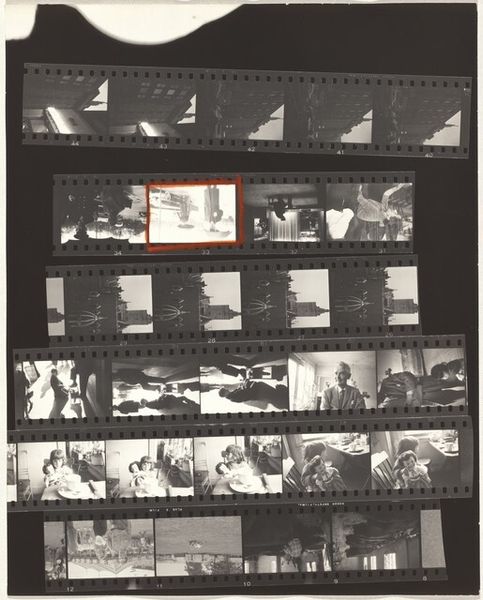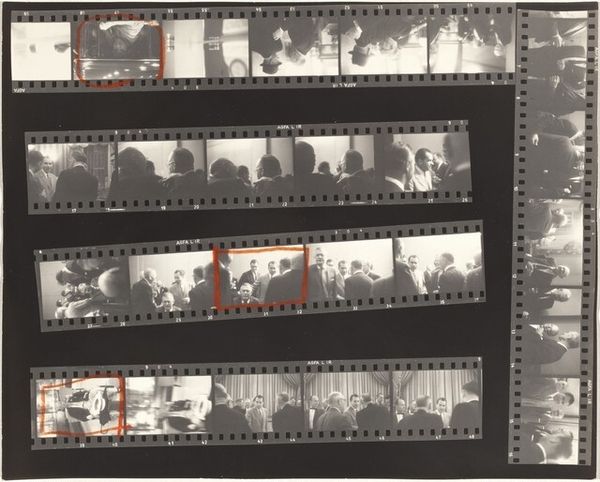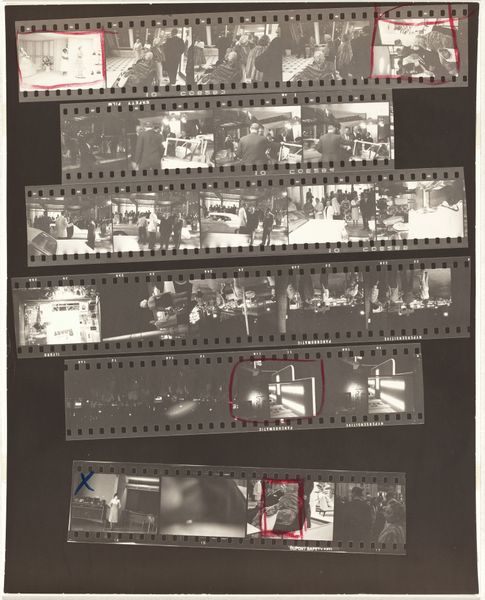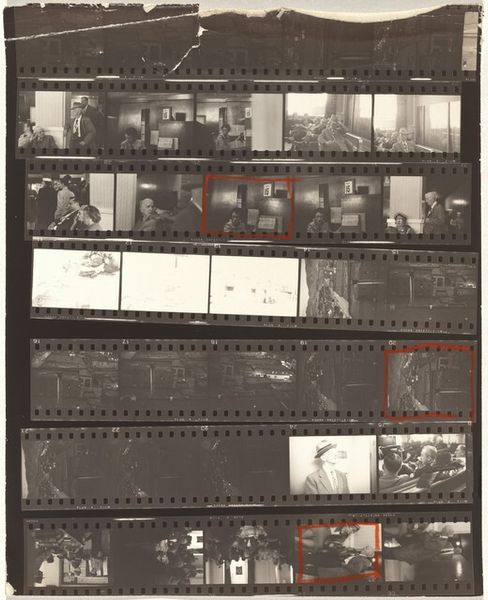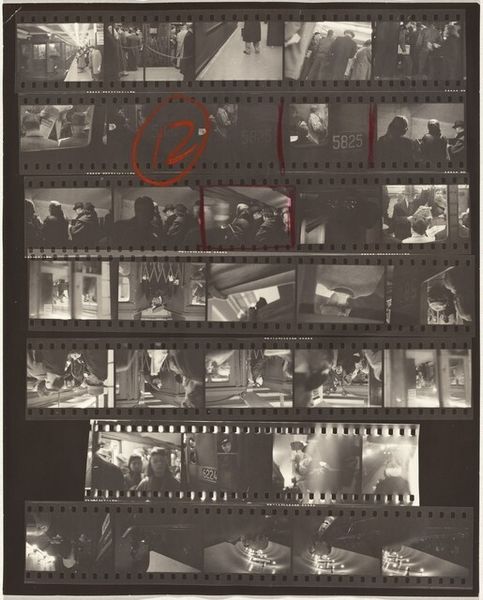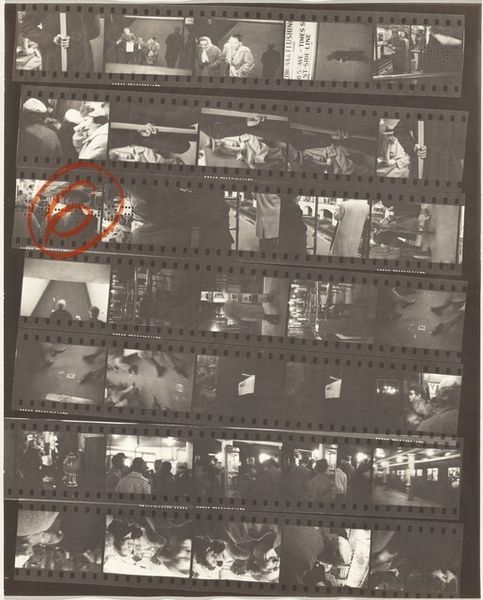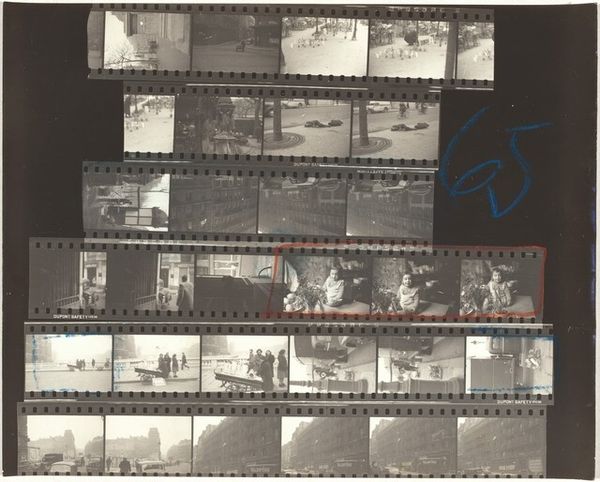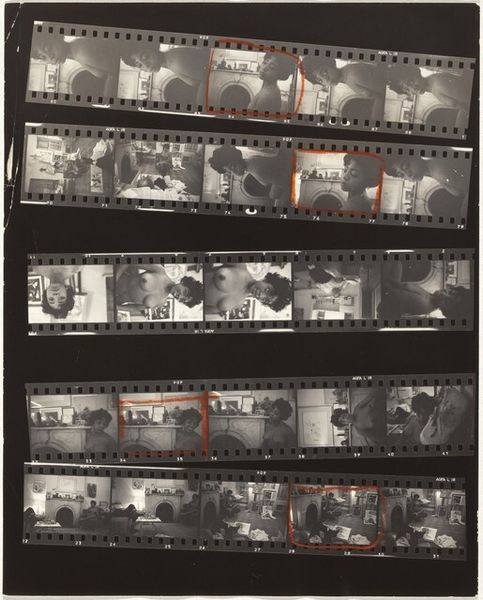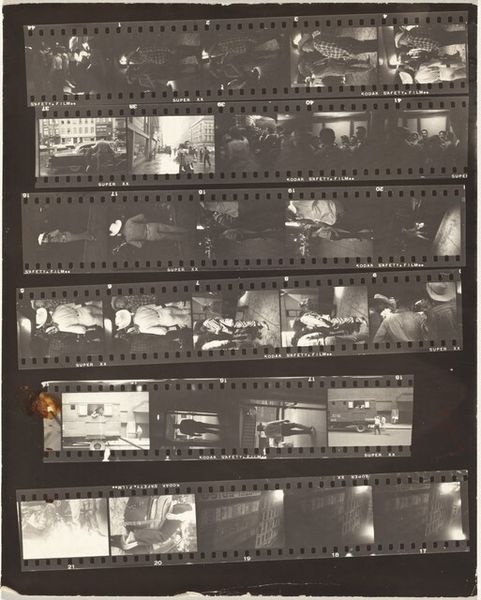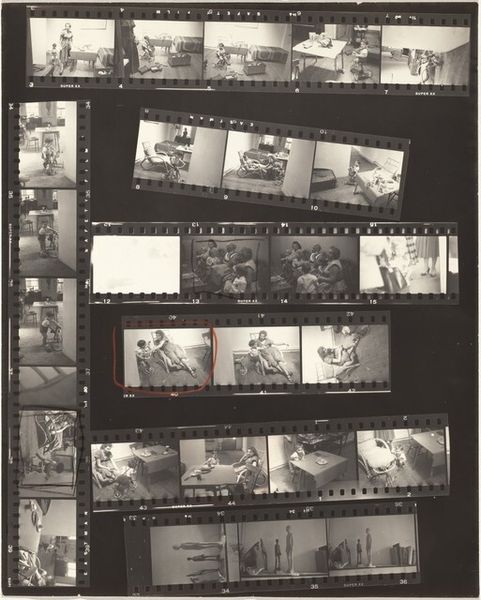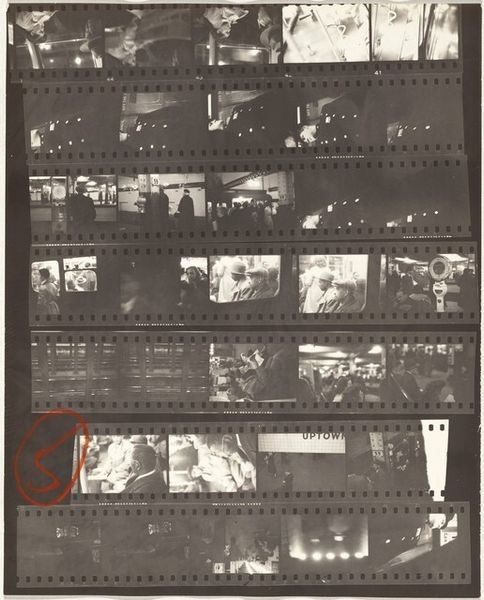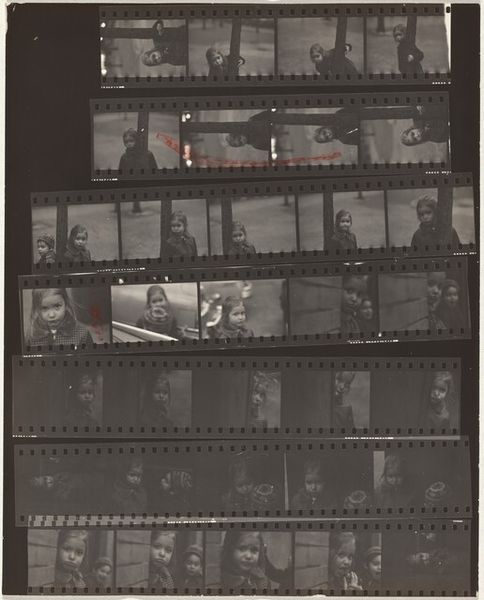
Dimensions: overall: 25.2 x 20.2 cm (9 15/16 x 7 15/16 in.)
Copyright: National Gallery of Art: CC0 1.0
Editor: This is Robert Frank’s “Juke boxes 3,” from 1955, a gelatin silver print. I’m struck by how this almost looks like a film strip – literally showing the artistic process, not just the final result. What do you see in this piece, particularly how Frank presents the medium itself? Curator: Indeed. Notice the explicit foregrounding of the filmic. Frank doesn’t try to hide the raw, material aspect of the photographic process. The perforations along the edges of each frame become as important as the images themselves. Consider also the contrast: the sharp, almost clinical blackness of the filmstrip against the grainy greys of the photographs. It creates a visual tension. Editor: So the form of the photograph is just as significant as the content within each frame? Curator: Precisely. Think about the ordering – the sequential nature of the strips. Does it imply a narrative, even a fragmented one? How do these little windows, these individual frames, build toward a larger idea? Do they build it? Or deconstruct it? What story are they telling? Editor: I guess it feels like you're seeing what the artist sees through his lens as he goes about making an artwork... Curator: What is key here is that the artist brings into plain sight the means with which he delivers to us the work, thus underlining his intentionality. By drawing our attention to the physicality of the medium, the support if you like, the artwork acquires its self-referential value. Now, can we read "Juke boxes 3" as a reflection of photography itself, perhaps a questioning of its documentary capabilities? Editor: I never thought of it that way, but focusing on the physical nature of the medium, the artist is reminding us to be aware of his artistic intentions in the final print. It gives you so much more to think about!
Comments
No comments
Be the first to comment and join the conversation on the ultimate creative platform.

